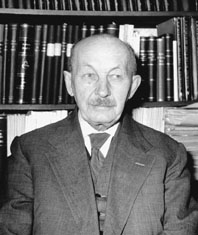

 | Page 777 |  |
First excavated in 1879 by Russian archaeologists A. Polyakov and a. spitsyn, Kostenki was the focus of long-term excavation for much of the twentieth century. Extending about 10 kilometers on the banks of the River Don to the south of Voronezh, Kostenki is in fact a complex of twenty-five surface and stratified open sites, which in some instances extend up to 2 kilometers away from the river.
The excavation of these sites has produced a large assemblage of items of material culture for the period 35,000 b.p.–11,000 b.p., including stone and bone tools, ivory Venus figurines, animal figurines carved from bone and stone, and features that have been interpreted as rectangular long houses. Although that interpretation is now being questioned on the basis that what was thought to be contemporary evidence now seems more likely to be the result of multiple occupations. The other “dwellings”—small houses made of mammoth bone—continue to be accepted as evidence of single occupations.
See also
(1885–1969)
Józef Kostrzewski was an outstanding Polish prehistorian. He initially studied medicine at the University of Wroclaw, but in 1909–1910 he took two semesters of archaeology under Wlodzimierz Demetrykiewicz at the Jagiellonian University in Cracow. He continued prehistoric studies in Berlin under gustaf kossinna and received his Ph.D. in 1914. The first year of his studies was spent in London, engaged in self-education at the british museum. In 1912, the first year of his independent research, Kostrzewski excavated a site in Siedlemin, near Jarocin (Wielkopolska) in poland. In 1914, his first book, Wielkopolska w czasach przedhistorycznych (Wielkopolska in the Prehistoric Period), was published. A second edition was published in 1923, the same year he became an assistant in the prehistory section of the Museum of the Society of Friends of Sciences in Poznan. He defended his postdoctoral dissertation on prehistory, written under the supervision of the anthropologist Jan Czekanowski, the classical archaeologist Edmund Bulanda, and the geologist Jozef Siemiradzkion, at Jan Kazimierz University in Lvov in 1919.

Józef Kostrzewski
(Arkadiusz Marciniak)
Kostrzewski was one of the founders of the Poznan University, in 1919, and he became head of the Department of Archaeology there. In 1920, he was one of the coorganizers of the Polish Prehistoric Society, whose aim was to support studies in prehistory and to encourage archaeology. It was composed of fans of archaeology from all over Poland and its journal, Przeglad Archeologiczny (Archaeological Review), has been published ever since.
In 1924, Kostrzewski successfully combined the collections of the two Poznan museums: the Polish one, or Mielzynskis’s Museum, and the German one, or Wielkopolskie Museum. A prehistoric section located in the Wielkopolskie Museum was established with Kostrzewski as its head, and it came to contain one of the most valuable archaeological collections in Poland. Kostrzewski began to develop his autochthonic theory of the origin of Slavs, and in 1926, he began editing the popular journal Z Otchlani Wiekow (From the Abyss of Ages), which became not only a great success but also an excellent instrument for the propagating of archaeology among the general public. His work at the museum
 |  |